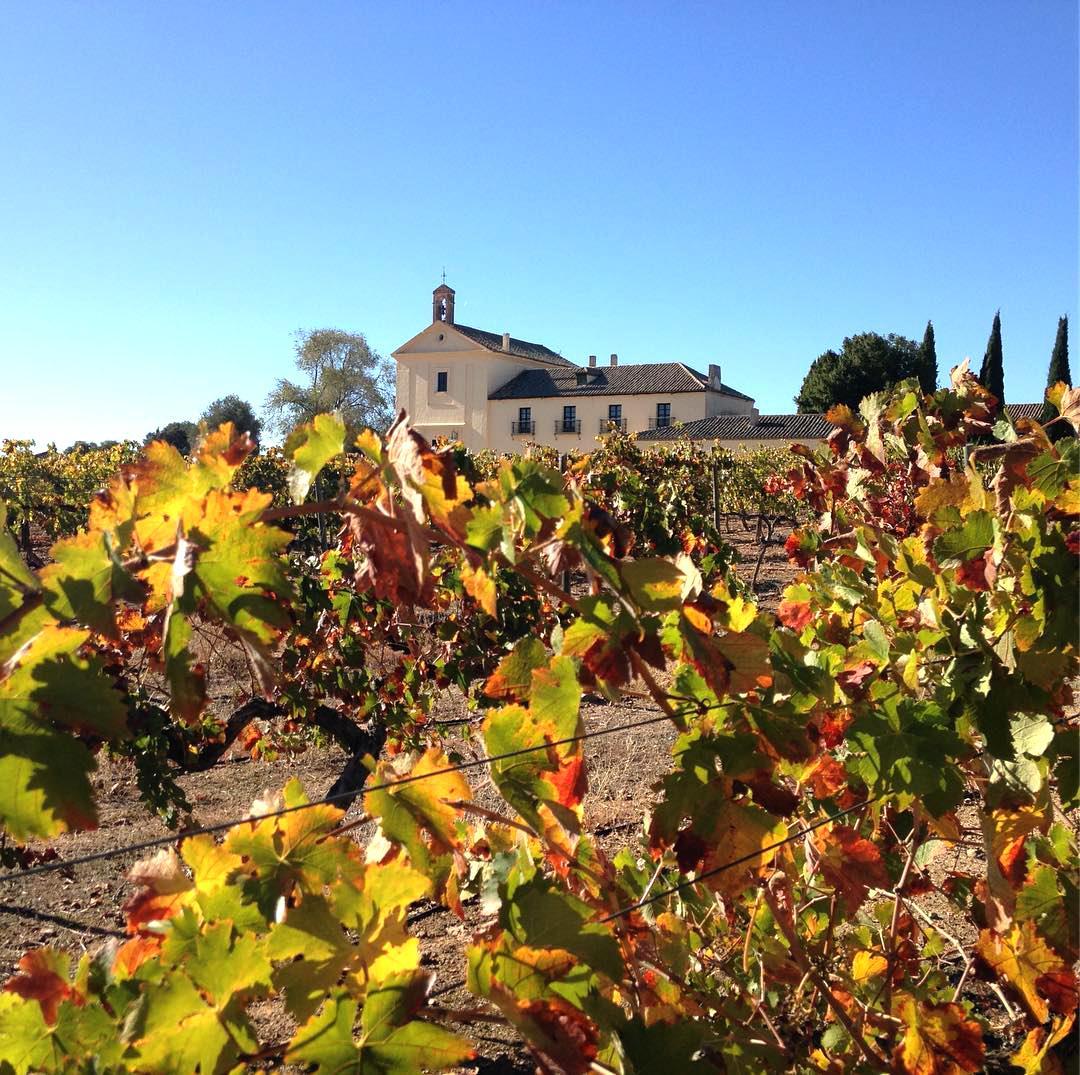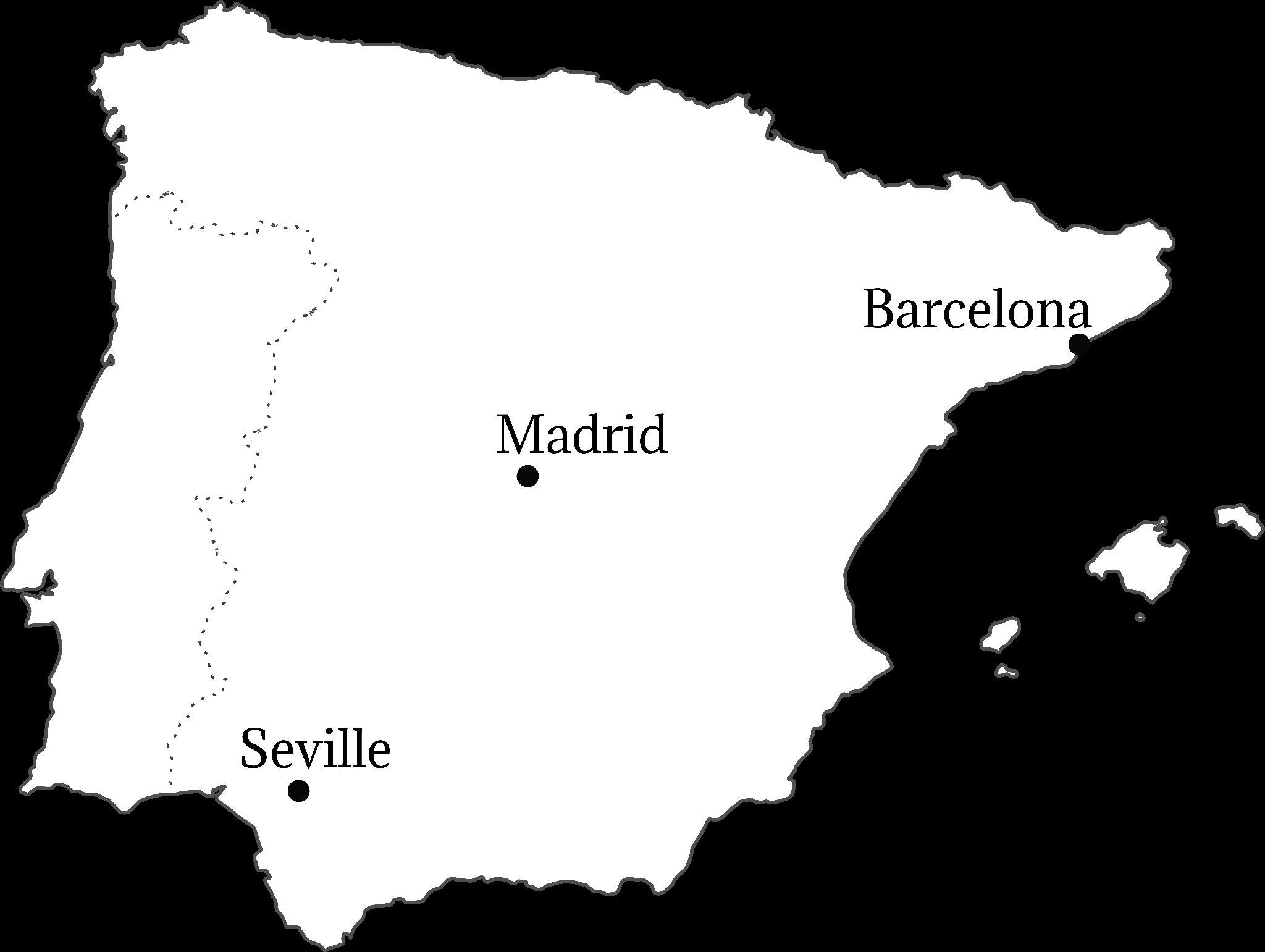KEY FACTS
CLIMATE: Continentalwithaverage summertemperatureof79°F(26°C)
ELEVATION: 1,640feet(500m)
SOILS: Well-drainedclay-limestone
VINE: 121acres(49ha)across11plots;90 acres(40ha)areGPE-approved
KEY VARIETALS: CabernetSauvignon, PetitVerdot,Syrah,Graciano,Merlot
ECO: Soilmanagementtechniquessuchas naturalcovers;fertilizationandcontrolofpests anddiseasesavoidingsynthetictreatments
INNOVATE: Conductingastudyon irrigationefficiencyaswellasnaturally increasingmustacidity
HISTORY
Marqués de Griñón Carlos Falcó Fernández de Córdova was widely recognized as one of the most influential names in Spanish wine of the 20th century. Falcó studied viticulture and enology at the University of California-Davis before returning home to make wine. In 1974, he introduced the Cabernet Sauvignon and Merlot varieties to Castilla-La Mancha, as well as drip irrigation and night harvesting. In 1999, Falcó published the 18-volume EntenderdeVino , the guide to Spanish winemaking. The founder of Grandes Pagos de España, Falcó passed away in 2020, leaving an extraordinary winemaking legacy.
TERROIR
Theclimateismarkedbycontrastsbetweenhot,dry summers and cold winters, along with high variation in diurnal temperatures during the growing season. Dominio de Valdepusa has a relatively flat topography, with an altitude of 1,068 feet (500 m) abovesealevel.
The soils of Dominio de Valdepusa are formed by a superficial layer of clay 12 to 20 inches (30 to 50 cm) thick, resting on a subsoil of fragmented limestone 6 ½ feet (2 m) or more deep. Soil pH is high (>8), with excellent structure, porosity and drainage,similarinthissensetoBurgundyandother well-knownwineregions.
PIONEERING TECHNOLOGY
MarquésDeGriñónwasthefirstestateinSpaintousedripirrigation.Rootsarepartiallydried by alternating irrigation, which produces smaller, more concentrated fruit and helps develop water efficiency in the vine. Thisprocessismonitoredusingdendrometerstomonitorthewaterstressofthevines.
DEEP
ROOTS On the advice of renowned consultants Claude and Lydia Bourguignon, Marqués De Griñón has been using techniques to encourage vines to establish deep root systems. For example, in the vineyard of Graciano planted in June 2007,tillagewasavoided.Itwasreplacedwithsuperficialmulchingfromaprevioussowingofbarley,mowedandchopped a few weeks before planting. Other techniques include vegetation cover, planting in ceptonic pots so that nascent roots deepen sufficiently until they reach the limestone layer, high planting density, drip irrigation and the elimination of surface roots.
VINIFICATION
Theprocessforeachvarietyandparcelisadapted,butingeneralgrapesaredestemmed,andfermentedin stainlesssteeltanks.Mostwineshavemaceractionsoffourtofiveweeksbeforebarrelaging.FrenchoakbarrelsfromAllier areusedexclusivelyforagingontheestate.
Carlos Falcó was the first to plant Petit Verdot and Syrah in Spain in 1991, and the first to plant Cabernet Sauvignon in Castilla-La Mancha in 1974.
roots systems are so that the vines can take advantage of the nutrients and resources in the soils and better express a sense of place. The grapes reach maturity with a high content of polyphenols and anthocyanins. This produces wines with a good balancebetweenfruitiness,alcoholandacidity.
Other specific characteristics that the clay soils bring are the power, complexity and intensity in the wines, while the subsoil of pure limestone confers elegance, minerality and velvety texture to its tannins.
MARQUÉS DE GRIÑÓN
FAMILY ESTATES PORTFOLIO:
Emeritvs, Petit Verdot, Graciano, Cabernet Sauvignon, Syrah
MDG Cabernet Sauvignon
DO Dominio de Valdepusa
Varieties
100% Cabernet Sauvignon
Vinification
vanguardofsingle-estatewinesinSpain. They continueto investigate the latest viticultural and enological techniquesinservicetothequalityoftheirwines.
Why is Marqués De Griñón a Grandes Pagos de España winery?
Carlos Falcó’s passion for unique Spanish terroirs led him to join others with similar ideas to share knowledge and raise the visibility of their estates and wines. Grandes Pagos de Castilla was born, but with his wider vision, it soon adapted its mission to celebrate all great Spanish terroirsasGrandesPagosdeEspaña.
MDG Syrah
12 to 14 months of barrel aging in 225L new barrels of Allier French oak
Good to Know
From vines planted in early 1970s
DO Dominio de Valdepusa
Varieties
100% Syrah
Vinification
12 months of barrel aging in 225L new and used barrels of Allier French oak
Good to Know
Wine is not filtered or fined
LEARN MORE
MARQUES DE GRI ÑÓN FAMILY ESTATES
Finca Casa de Vacas
Ctra. CM-4015, Km.23 45692 Malpica de Tajo
Eugenio






























